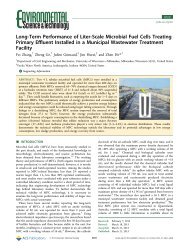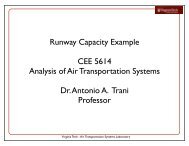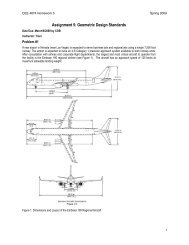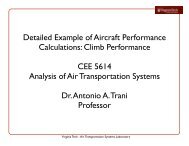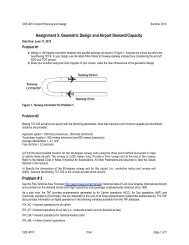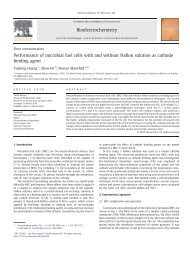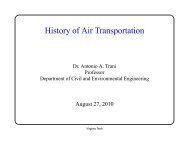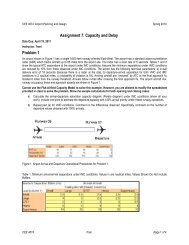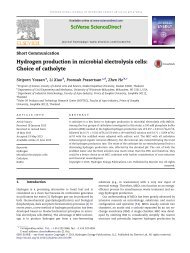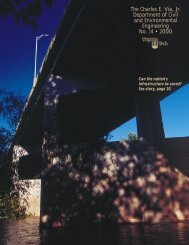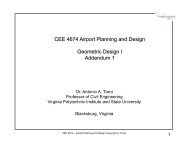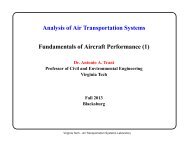Design and Construction of Steel Plate Shear Walls - Eatherton ...
Design and Construction of Steel Plate Shear Walls - Eatherton ...
Design and Construction of Steel Plate Shear Walls - Eatherton ...
You also want an ePaper? Increase the reach of your titles
YUMPU automatically turns print PDFs into web optimized ePapers that Google loves.
for service loads, e.g. a stout wind.Researchers who have run tests onSPSW’s report extremely loudbanging as the loading reverses.Even though there haven’t beenany documented cases <strong>of</strong> SPSWbuildings making loud bangingsounds in wind storms, SPSW arerelatively new <strong>and</strong> it may yetbecome an issue. Theory <strong>of</strong>elasticity texts give formulas forcalculating plate buckling <strong>and</strong> it isworthwhile to underst<strong>and</strong> the loadat which an SPSW will buckle.Introducing intermediate HBE’swith shorter panel lengths willincrease the buckling load.The third consideration when choosing plate thickness is the material specification.Section 6.1 <strong>of</strong> the AISC Seismic Provisions limits the materials that can be used in the seismicload resisting system. Acceptable plate material includes A36 or A1011 Grade 55 (in either SSor HSLAS). A1011 is hot rolled sheet steel <strong>and</strong> as such should have more pronounced yielding<strong>and</strong> more ductility than cold rolled sheet metal. It would be much more preferable, however, touse A1011 grade 30 or 33 sheet steel as it has a lower yield <strong>and</strong> more elongation. While thecommentary discusses low yield point plate material, it is suggested that future editions <strong>of</strong> theAISC Seismic Provisions explicitly allow these materials.Whenever light gage plate is used for the web plate it is the author’s opinion that it isworthwhile to require coupon tests to measure actual yield strength <strong>and</strong> percent elongation.Since the performance <strong>of</strong> the building is so directly tied to the plate material, the greaterunderst<strong>and</strong>ing <strong>of</strong> the primary energy dissipating element will easily justify the slight additionalcost.Column <strong>Design</strong>Figure 3 – Field welding <strong>of</strong> gage plate that requiredspecial procedure.The main body <strong>of</strong> the 2005 AISC Seismic Provisions states that the required strength <strong>of</strong>VBE’s shall be based upon the forces corresponding to the expected yield strength, in tension, <strong>of</strong>the web calculated at an angle, α. To reach this level <strong>of</strong> force the beams are required to developplastic hinges. The commentary describes three methods that can be used to design the VBE.The first, nonlinear pushover analysis, will give the most accurate underst<strong>and</strong>ing <strong>of</strong> the SPSWresponse. Axial loads <strong>and</strong> moments in the columns caused by web plate yielding <strong>and</strong> plastichinging <strong>of</strong> the HBE can be used to design the columns to remain elastic. It is important to notethat elastic modeling <strong>of</strong> SPSW will not capture the intent <strong>of</strong> the design process: to size VBE’s toremain elastic while the web plate yields. To design the VBE for yielded plate <strong>and</strong> plastichinging <strong>of</strong> HBE’s requires consideration <strong>of</strong> the nonlinear response <strong>of</strong> the elements. Nonlinearpushover analyses, however, are not that common in most design <strong>of</strong>fices.The second method called combined linear elastic computer programs <strong>and</strong> capacitydesign concept (LE+CD) uses an elastic model <strong>of</strong> the wall, considering moment connections <strong>and</strong>



